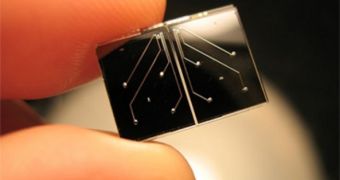Establishing the density of a cell is something that scientists have been trying to do for many years, but thus far all efforts have failed. Enter a new device from researchers in the United States, that is capable of finally assessing the density of single cells.
The basic principle experts used was discovered more than two millennia ago by famed mathematician Archimedes, who was able to measure the density of his king's crown by establishing its weight in two different fluid environments.
The same approach was used by scientists at the Massachusetts Institute of Technology (MIT) in Cambridge, who wanted to analyze something much smaller than a crown. Their groundbreaking work may open up new avenues of research in molecular biology and related fields.
Understanding the biology of cells is a tremendously complex task, and one that experts are anxious to complete. Once this is done, they would have a remarkable insight into how each type of cell in the human body is functioning.
“Density is such a fundamental, basic property of everything. Every cell in your body has a density, and if you can measure it accurately enough, it opens a whole new window on the biology of that cell,” says MIT Department of Biological Engineering research associate William Grover.
In order to determine the density of cells, the experts had to measure its mass in two different fluids. In order to do that, they improved on a suspended micro-channel resonator, a microfluidic device that was developed back in 2007.
Single cells are put in this device, and are then passed through microscopic channels in its surface. In some of these channels, small cantilevers are installed. These structure vibrate natively at a certain frequency, but that is changed when the cells move through.
Using these vibrations as a starting point, MIT experts can calculate the mass of the cells. All that remains to be done afterwards is to pass the cells through the channels again, this time in a different fluid. The two weight measurements can determine its density.
The new technique could have a variety of practical applications, such as for example probing cancer cells, or determining whether drugs reach their targets when carried by new delivery systems.
“Understanding how density of individual cancer cells relates to malignant progression could provide fundamental insights into the underlying cellular processes, as well as lead to clinical strategies for treating patients in situations where molecular markers don’t yet exist or are difficult to measure due to limited sample volumes,” Scott Manali says.
The expert is a professor of biological engineering and a member of the David H. Koch Institute for Integrative Cancer Research at MIT, as well as the senior author of the new paper.
Details of the work appear in the June 20 issue of the esteemed journal Proceedings of the National Academy of Sciences (PNAS).

 14 DAY TRIAL //
14 DAY TRIAL //